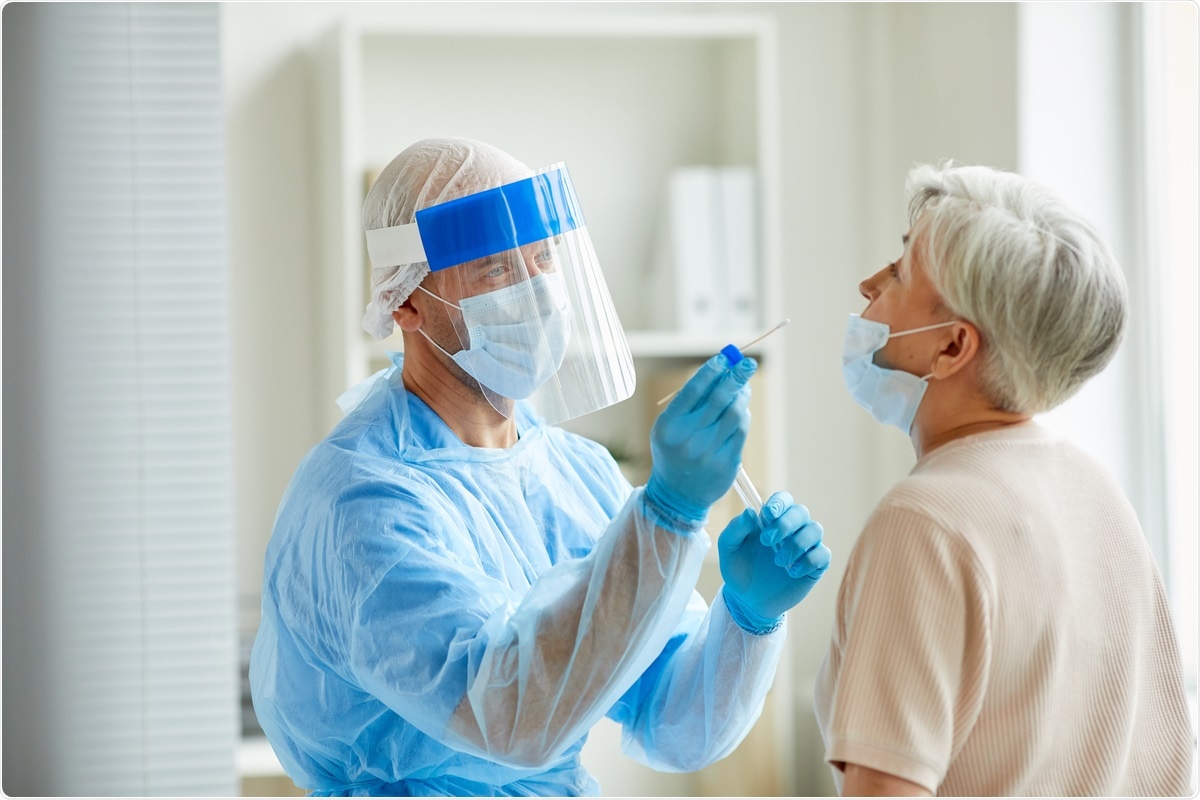A new preprint shows that universal screening of all hospital admissions for infection with the severe acute respiratory syndrome coronavirus 2 (SARS-CoV-2) is highly inefficient as a screening method in regions with a low prevalence of the coronavirus disease 2019 (COVID-19) in the absence of high-risk factors.
 Study: Diagnostic Yield of Screening for SARS-CoV-2 among Patients Admitted for Alternate Diagnoses. Image Credit: SeventyFour/ Shutterstock
Study: Diagnostic Yield of Screening for SARS-CoV-2 among Patients Admitted for Alternate Diagnoses. Image Credit: SeventyFour/ Shutterstock

 This news article was a review of a preliminary scientific report that had not undergone peer-review at the time of publication. Since its initial publication, the scientific report has now been peer reviewed and accepted for publication in a Scientific Journal. Links to the preliminary and peer-reviewed reports are available in the Sources section at the bottom of this article. View Sources
This news article was a review of a preliminary scientific report that had not undergone peer-review at the time of publication. Since its initial publication, the scientific report has now been peer reviewed and accepted for publication in a Scientific Journal. Links to the preliminary and peer-reviewed reports are available in the Sources section at the bottom of this article. View Sources
A preprint version of the study is available on the medRxiv* server while the article undergoes peer review.
Background
In 2020, healthcare facilities began to test all patients for COVID-19 at admission, whether symptomatic or not and irrespective of local prevalence rates. The rationale was the identification of asymptomatic cases that could drive hospital outbreaks.
However, real-time evidence fails to support this trend. Conversely, the cons of universal testing include crowding of the Emergency Department (ED) with patients waiting for their test results, with higher mortality and morbidity as a result, and the unnecessary isolation of patients during routine workups and treatment procedures.
This can cause holdups at all levels, impacting patient outcomes while potentially increasing the excessive use of Personal Protective Equipment (PPE) during such precautions. Bottlenecks in COVID-19 testing may delay the identification of actual positive tests in symptomatic patients.
In addition, the resources required for universal testing could be spent more productively by healthcare centers.
Given all these concerns, the Infectious Diseases Society of America (IDSA) advises that universal testing be carried out only when the number of active cases is >10%, or >10,000/100,000 population. This threshold was hardly ever met because of the active adoption of non-pharmaceutical interventions to keep the active caseload low and ease the burden on hospitals.
The current paper describes the results of a study aimed at finding the number of cases of SARS-CoV-2 infection among patients who were admitted with other unrelated diagnoses and to find the risk factors for a positive test.
What did the study show?
The results showed that of about 16,000 patients admitted for non-COVID-19 diagnoses, during a period of very low COVID-19 prevalence in Canada, those without symptoms suggestive of this infection made up over 3,000.
Of this number, only 0.4% (13 patients) had a positive test, compared to ~110 patients of the ~12,500 with suggestive symptoms, or 0.9%. Altogether, there were 122 COVID-19-positive individuals.
Over a quarter of these came from a region with a daily incidence of eight or more infections per 100,000. There was no significant difference in case yield among patients screened based on symptoms, whatever the type of symptom.
Positive tests were more likely for healthcare workers, those with a history of household or institutional contact with a SARS-CoV-2 positive individual, and those from a region with over eight cases/100,000 population on a moving weekly average. Especially at risk were those who were living with or caring for someone with COVID-19.
What are the implications?
The researchers aimed to determine what parameters could increase the diagnostic yield of SARS-CoV-2 testing when applied to hospital admissions in Canada in 2020. In this study, the positive case number was low among patients admitted for emergency diagnoses unrelated to COVID-19.
The lowest percentage of positive tests was among these patients when they did not report any symptoms found in COVID-19. In contrast, they found risk factors linked to a higher screening yield than a threshold of high COVID-19 incidence by a 7-day moving average.
These findings corroborate earlier studies that show a strong link between the diagnostic yield of screening for SARS-CoV-2 infection by nucleic acid amplification testing (NAAT) and the prevalence of COVID-19 in the community. Again, a Cochrane systematic review suggests that the case yield is higher among those with a fever.
The authors suggest,
While the number needed to screen to identify one positive case among admitted patients in our study was between 110 and 250 among unvaccinated patients, we propose that the IDSA screening threshold likely needs to be adopted.”
With this large study, based on multiple centers spread across various geographical locales and including a diverse set of patients, the findings merit attention, especially as vaccination becomes more extensive in its coverage.

 This news article was a review of a preliminary scientific report that had not undergone peer-review at the time of publication. Since its initial publication, the scientific report has now been peer reviewed and accepted for publication in a Scientific Journal. Links to the preliminary and peer-reviewed reports are available in the Sources section at the bottom of this article. View Sources
This news article was a review of a preliminary scientific report that had not undergone peer-review at the time of publication. Since its initial publication, the scientific report has now been peer reviewed and accepted for publication in a Scientific Journal. Links to the preliminary and peer-reviewed reports are available in the Sources section at the bottom of this article. View Sources
Article Revisions
- Apr 29 2023 - The preprint preliminary research paper that this article was based upon was accepted for publication in a peer-reviewed Scientific Journal. This article was edited accordingly to include a link to the final peer-reviewed paper, now shown in the sources section.